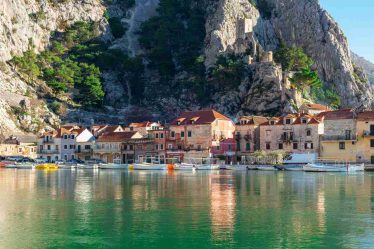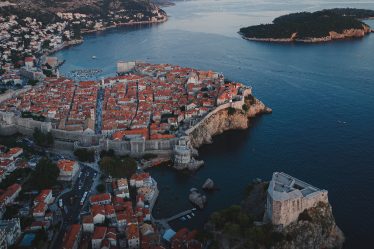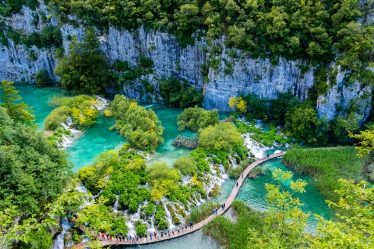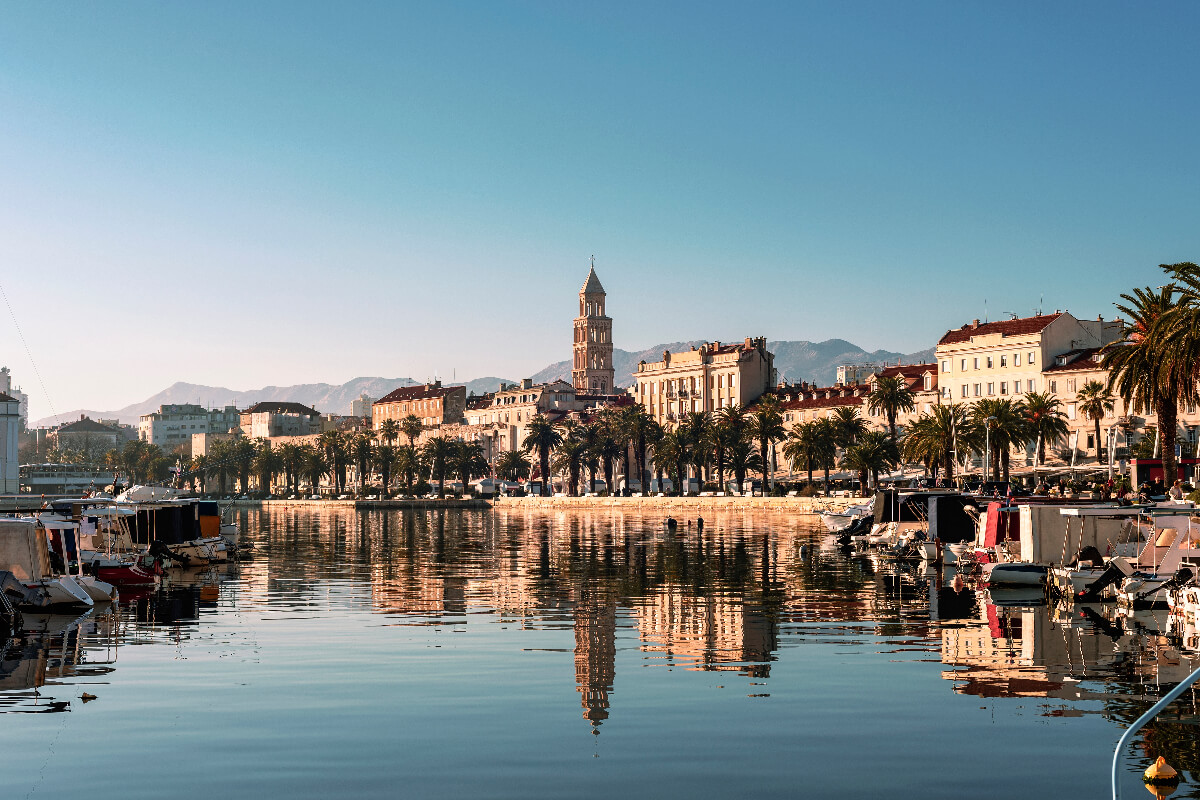
Split is one of the most beautiful and fascinating cities in Croatia, attracting tourists from all over the world with its rich history, charming atmosphere and amazing landscape. Located on the coast of the Adriatic Sea, this city offers not only beautiful beaches and blue waters, but also unique monuments and a culture that dates back to ancient times.
Split is best known for the monumental palace of Emperor Diocletian, which is the center of the city. This magnificent masterpiece of Roman architecture was built in the 3rd century AD and is one of the best preserved palaces of its kind in the world. Inside the palace, you can stroll through the narrow, winding streets, discovering the charming cafes, restaurants and boutiques hiding behind them. There is also an impressive Peristyle in the center of the palace, surrounded by a colonnade, which is the perfect place to relax and admire the beauty of the place.
Location
Split is located on the west coast of Croatia, in the Dalmatia region. It occupies a convenient location, surrounded by the Adriatic Sea on one side and bordered by picturesque mountains on the other. This strategic location makes the city easily accessible by both land and sea. Numerous airlines and ferry connections make it convenient to reach Split from other European countries as well as from other parts of Croatia. Its location on the Adriatic Sea also makes it a great place for beach and water sports enthusiasts to enjoy the blue sea and the charms of the coast.
What to see in Split
During your stay in Split, there are many fascinating places to see that reflect the city’s rich history and character. Here are a few of them:
Diocletian’s Palace: This ancient Roman palace is the heart of the city. You can tour its interiors, walk through the narrow streets and discover the cafes, restaurants and boutiques hiding there. The Peristyle, an impressive courtyard surrounded by a colonnade, makes an unforgettable impression.
St. Dujma Cathedral: This is an impressive work of Romanesque-Gothic architecture, located in the heart of the city. It’s worth going inside and admiring the rich interior, as well as climbing the tower for a magnificent view of Split and the surrounding area.
National Square (Pjaca): The central square in the Old City, full of charming townhouses and cafes. It’s a great place to relax, savoring the atmosphere and watching the bustling life of the city.
Marjan Hill: This is a green hill that surrounds Split and offers great views of the city, the sea and the surrounding area. You can stroll along the paths, admire the beautiful vegetation, and visit the Chapel of St. George and the City Museum, which are located at the top of the hill.
City Walls: Split has impressive city walls that once protected the city from dangers. Today, you can walk around them and enjoy the panorama of Split and the Adriatic Sea.
Krka National Park: Although not located directly in Split, it’s worth taking some time for a trip to this national park. It is home to the beautiful Skradinski Buk waterfall, where you can admire the cascades of water and explore charming paths.
These are just a few of the many attractions you can see in Split. The city also offers numerous museums, art galleries, restaurants with local cuisine and wonderful beaches where you can relax and enjoy the sun.
If you are planning a trip to Croatia check out Dubrovnik.
Diocletian’s Palace
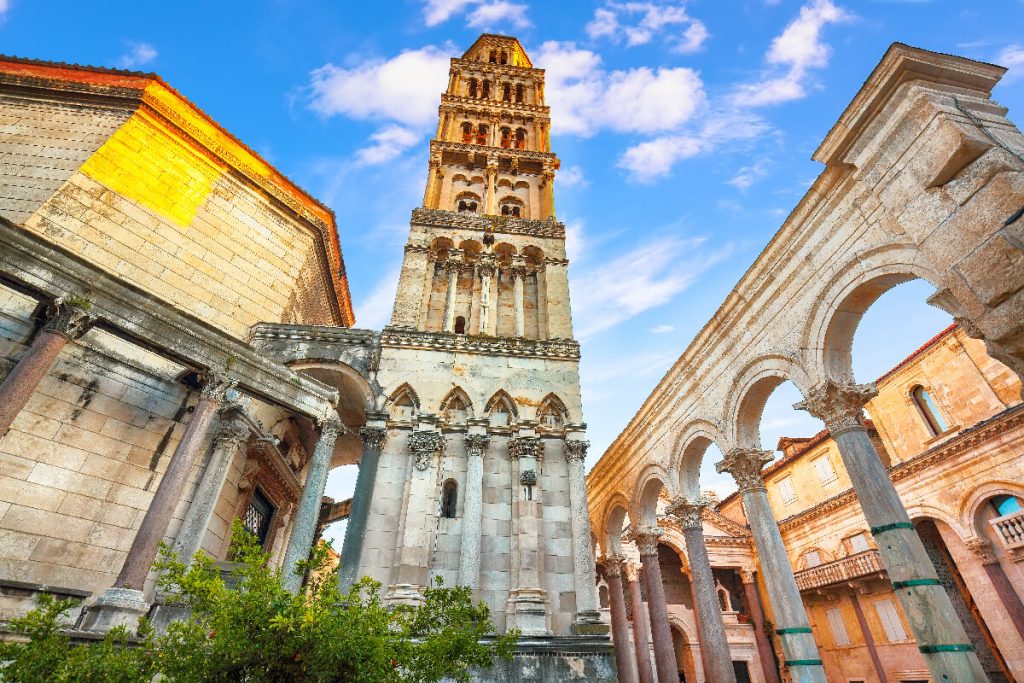
Diocletian’s Palace, located in the heart of Split, is one of the finest monuments of ancient architecture in the world. Built in the 3rd century AD as the residence of the Roman Emperor Diocletian, today it is the heart of the city and one of Croatia’s main tourist attractions. This monumental architectural complex impresses with its impressive size, precision workmanship and well-preserved condition.
Diocletian’s Palace consists of walls more than 200 meters long, inside of which there is a maze of narrow streets, squares, courtyards and buildings. Entering through the palace gate, you are immediately transported back in time to ancient Rome. Every step along these stone streets is full of history, and the surrounding monuments are still a reminder of the power and splendor that accompanied imperial rule.
There are many fascinating places to explore in Diocletian’s palace. Among them, note the Peristyle, the central courtyard, which impresses with its elegance and architectural details. The magnificent colonnades, arches and sculptures create an extraordinary atmosphere, which is the perfect backdrop for photographs and moments of relaxation.
Another remarkable site is the underground palace cellar, known as the Diocletian’s Underground. These labyrinthine corridors are full of secret passages that lead to different parts of the palace. This is a fascinating place where you can touch history and feel the atmosphere of past centuries.
Diocletian’s Palace is not only a collection of buildings and courtyards, but also a bustling center of the city. Inside the palace there are numerous stores, cafes, restaurants and markets where you can sample local specialties and buy souvenirs.
Visiting Diocletian’s palace is a trip back in time and an insight into an architectural masterpiece that has survived the centuries. It is one of those places that not only impresses with its beauty, but also brings to life the history and culture of the ancient world.
St. Dujma Cathedral
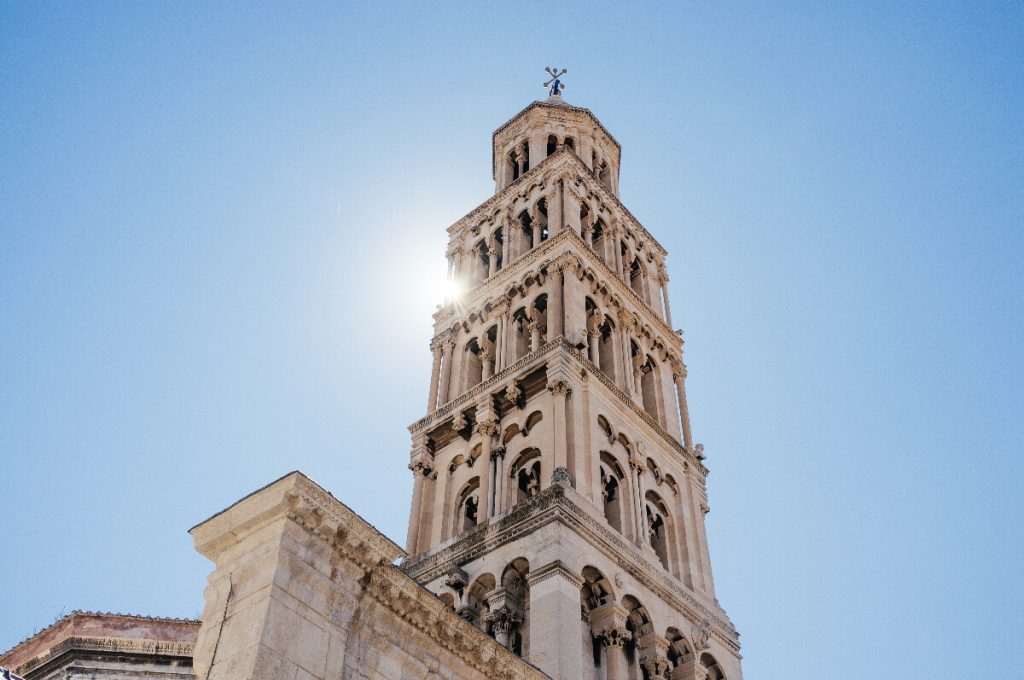
St. Dujma Cathedral in Split is one of the most important and beautiful religious monuments in Croatia. Located in the heart of the city, this impressive Romanesque-Gothic style building attracts attention with its majestic facade and monumentality. Its history dates all the way back to the 4th century, when the first cathedral was erected on this site.
Stepping inside St. Dujma Cathedral is a true journey through time and art. Admire the richly decorated altars, reliquaries and frescoes that depict biblical stories and saints. The high vaults, marble columns and carved details are a true expression of the mastery of ancient craftsmen.
One of the cathedral’s most famous features is the bell tower, known as Zvonik. Climbing to its top, you can enjoy a panoramic view of the city of Split and the surrounding area, as well as hear the sound of the bells that have been ringing over the Adriatic Sea for centuries.
St. Dujma Cathedral is also the site of relics and precious religious objects. The crypt houses the remains of St. Dujma, the patron saint of Split, who was the city’s first bishop. This place has a unique atmosphere where the faithful and tourists can immerse themselves in spirituality and history.
Not only for lovers of sacred art, but also for any visitor to Split, St. Dujma Cathedral is an indispensable stop. Its beauty, history and religious significance make it one of the most important cultural and spiritual sites in all of Croatia.
National Square in Split

National Square, also known as Narodni Trg, is the heart of the city of Split and one of the most important places every visitor should see. It is a central place for meetings and social events, as well as an oasis of sights, cafes and restaurants.
The National Square is surrounded by beautiful buildings and monuments that reflect Split’s rich history and architecture. The highlight of the square is the St. Dujma Cathedral, an imposing church whose clock tower dominates the city skyline. The cathedral was built in Romanesque and Gothic styles, and its interior is resplendent with magnificent works of art, including the wooden altar of St. Dujma.
Next to the cathedral is the Papal Palace, the former residence of the bishops and the place where Pope John Paul II stayed during his visit to Split in 1998. The Papal Palace is an impressive building with visible traces of various architectural styles that have evolved over the centuries.
National Square is bustling with activity and is a popular gathering place for locals and tourists. Here you can feel the true atmosphere of the city by enjoying a coffee in one of the numerous cafes, strolling through the streets full of stores and stalls selling local products, or enjoying delicious food in one of the numerous restaurants.
It should also not be overlooked that the National Square is full of artistic exhibitions, concerts and festivals, which add to its charm. It is a place where culture and history intertwine with everyday life, creating an unforgettable experience for all visitors.
Marjan Hill
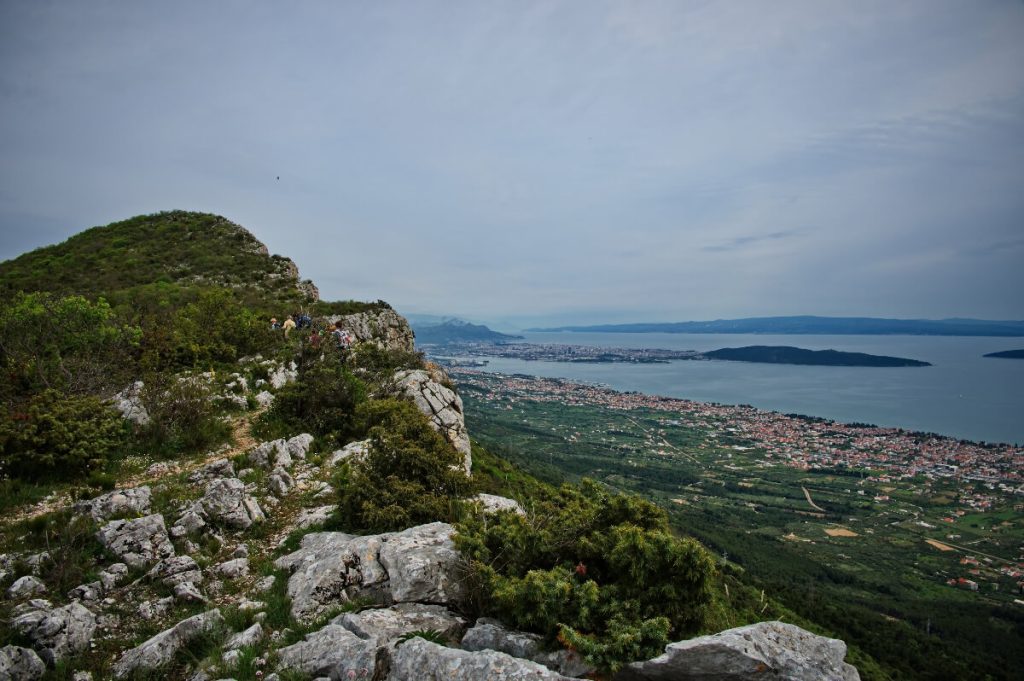
Marjan Hill is a natural treasure and a green oasis located just above Split. It is a popular recreational and leisure destination for locals and tourists alike. Covered with lush vegetation and walking trails, the hill offers beautiful views of the city, the Adriatic Sea and the surrounding islands. It is the perfect place for nature lovers to enjoy peace, fresh air and the beauty of the surrounding nature.
Walking along the paths of Marjan Hill, you will come across a variety of viewpoints that will take your breath away. We especially recommend the Telegrin viewpoint, which offers a panoramic view of Split and the Adriatic Sea. This is the perfect place to stop for a while, relax and capture unforgettable views in photographs.
Marjan Hill also has many other attractions to offer. On its grounds is the Chapel of St. George, which is a popular pilgrimage destination and a place of recollection for many people. You can also visit the City Museum, which presents the history of Split and the surrounding area.
In addition, Marjan Hill is an ideal place for those who are physically active. There are many trails for trekking, running and biking that lead through scenic paths and allow you to enjoy the beauty of nature. You can also find numerous picnic and barbecue areas that provide the perfect atmosphere for family gatherings and outdoor relaxation.
Marjan Hill is undoubtedly one of the most beautiful places in Split. Its picturesque landscapes, tranquility and proximity to nature create the perfect counterbalance to the bustling city center. For anyone who wants to get away from the hustle and bustle of the city and enjoy the beauty of nature, Marjan Hill is the perfect place to visit.
City walls in Split
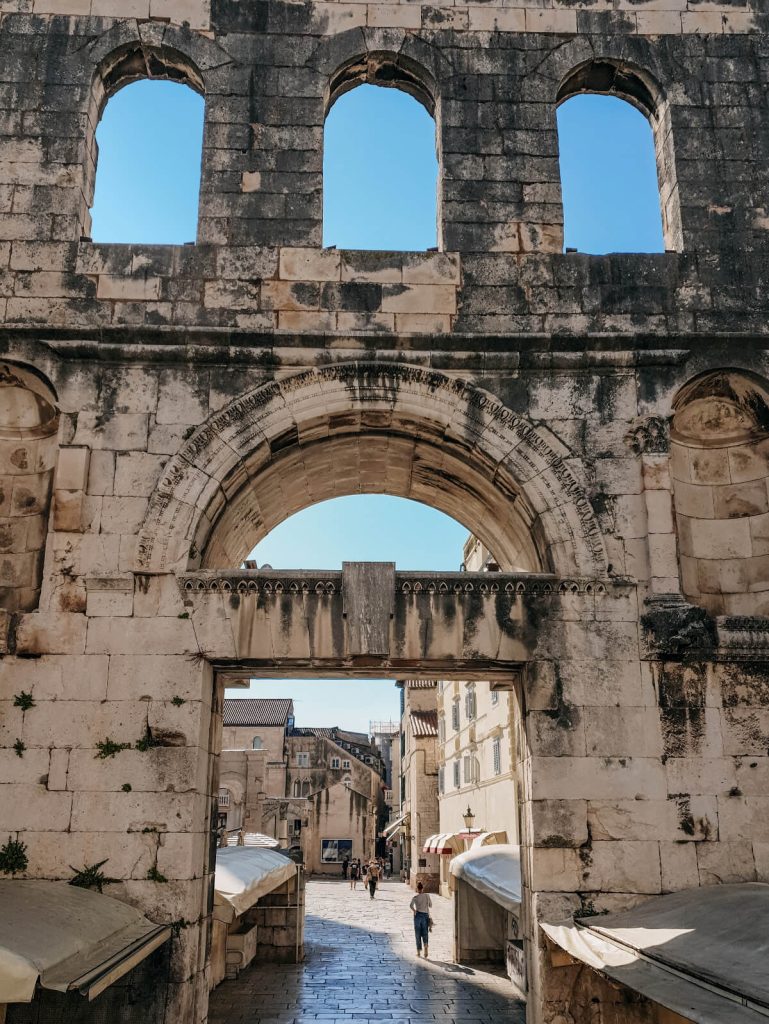
Split’s city walls are an impressive testament to the city’s long and rich history. Built in ancient times, these massive fortifications are one of the most important defensive monuments in Croatia. Today, they are one of Split’s main landmarks and tourist attractions.
The city walls stretch for about 1.7 kilometers and rise as high as 25 meters. Their construction consists of solid stones, and their thickness in some places reaches as much as 2-3 meters. Surrounding the walls are towers and gates that once served as defense and control.
Walking along the walls, you can discover beautiful panoramas of the city of Split, overlooking the maze of streets, colorful rooftops, the National Square and the Adriatic Sea. This unique experience allows you to feel as if you were in medieval times, when the city walls played an important role in protecting the city from invasions. Many visitors choose to climb the city walls for sweeping views and unforgettable photographs. It’s also a great opportunity to explore the history and architecture of these impressive fortifications.
Split’s city walls are not only a monument, but also a symbol of the city’s strength and perseverance. Over the centuries, they have survived wars, storms and changing times, serving as the pride of the residents and an important part of the cultural heritage. Their presence reminds us of the steadfastness and history that lies at the heart of Split.
Krka National Park
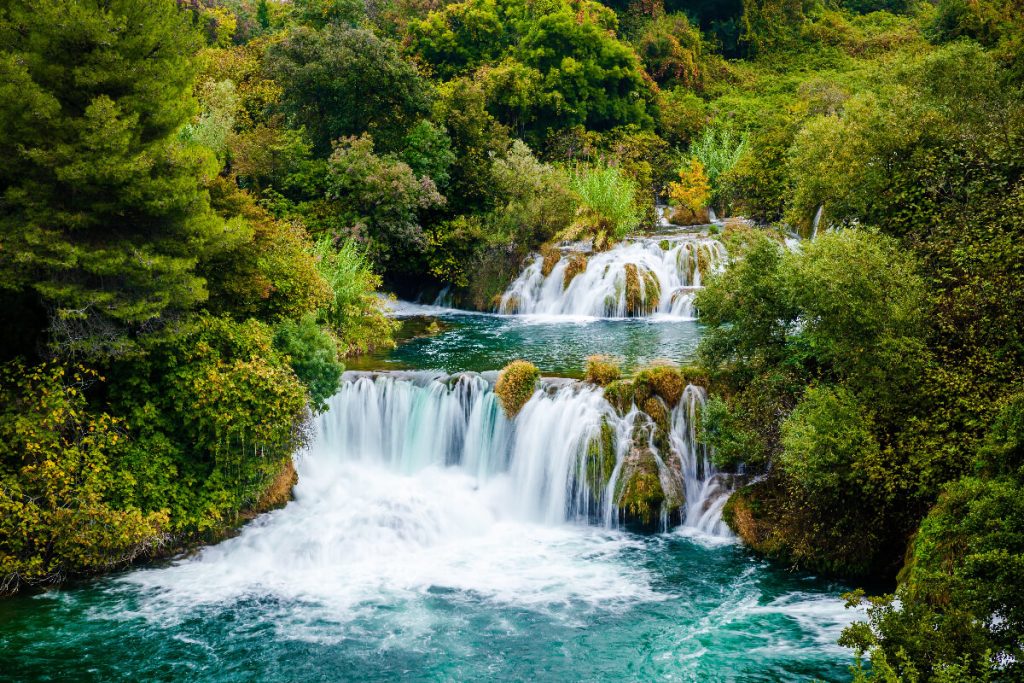
Krka National Park is one of the most beautiful and spectacular natural sites in Croatia. Located within the Krka River valley, this charming park offers an unforgettable experience of waterfalls, cascades and picturesque landscape. The park’s main attraction is the famous Skradinski Buk waterfall, which rises to a height of 46 meters and spreads over 100 meters wide. Its cascades create an impressive spectacle, and the water, which falls with powerful force, surrounds everything around with mist and rustling. This place is not only beautiful to the eyes, but also provides an extraordinary sound and tactile experience. In addition to the Skradinski Buk waterfall, the park offers many other attractions, such as the Roški Slap waterfall, which are also breathtaking. You can also explore scenic walking paths that lead through lush vegetation, rocky gorges and picturesque lakes. Krka National Park is a true paradise for nature lovers, who can explore its beauty while hiking, swimming in crystal clear lakes or admiring wildlife. It’s a place that allows you to escape the hustle and bustle of the city and immerse yourself in natural harmony and tranquility.
What to know before traveling to Split
Before traveling to Split, it’s helpful to know some important information to help you plan and prepare for an enjoyable experience.
First, it is important to check the visa and passport requirements for your country. Croatia is a member of the European Union, which makes travel easier for citizens of many European countries. However, make sure that no additional travel documents are required.
Another important aspect is the climate and weather. Split has a typical Mediterranean climate, characterized by hot, dry summers and mild winters. Before your trip, it’s a good idea to check the weather forecast to adjust your packing and prepare yourself with appropriate attire and accessories.
In Split, it’s worth remembering the currency conversion rate. Croatia uses the Croatian kuna (HRK), and most places also accept credit card payments. It’s also a good idea to check the currency exchange rate before you leave so you have an idea of local prices and costs.
Croatian is the official language in Croatia, but most people in tourist spots in Split also speak English. However, it is a good idea to familiarize yourself with basic phrases in Croatian, which will help you communicate and interact with locals.
There are many places to see and activities to try in Split. It’s worth planning your time and consulting local guides or tourist offices to learn about the main attractions, such as Diocletian’s Palace, St. Dujma Cathedral, Marjan Hill and Krka National Park. You can also sample the local cuisine and discover traditional Croatian dishes and delicacies.
Before traveling, it is a good idea to familiarize yourself with local customs and culture in order to respect local traditions and customs. Croatia has a rich cultural heritage that can be explored while traveling.
It is also important to remember to be safe while traveling. It’s a good idea to stay alert, especially in crowded places and at night, and to secure your valuables.
In conclusion, before traveling to Split, it is worth checking visa requirements, adjusting to the climate and currency, familiarizing yourself with local customs and attractions, and taking care of your safety. With proper preparation, a trip to Split will be an unforgettable experience full of beautiful sites, culture and adventure.

